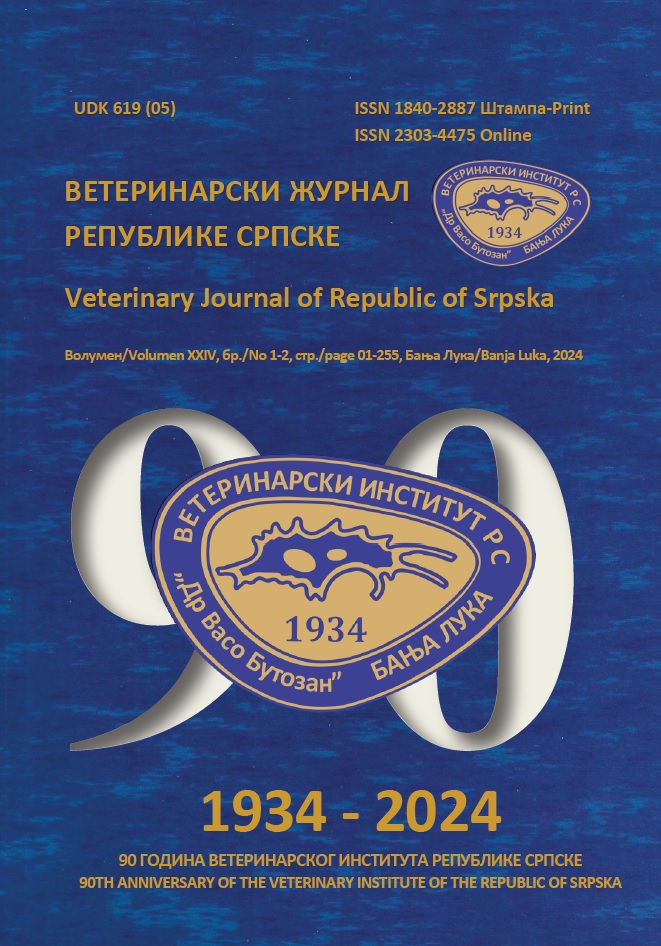CULICOIDES AS VECTORS OF ORBIVIRUSES, CAUSATIVE AGENTS OF PARTICULARLY DANGEROUS INFECTIOUS DISEASES OF IMPORTANCE FOR VETERINARY MEDICINE
DOI:
https://doi.org/10.7251/VETJEN2401038SAbstract
In the past, the worldwide distribution of bluetongue virus was limited to areas between approximately 35 degrees south and 40 degrees north latitude, but recently it has dramatically expanded in Europe to 58 degrees north latitude. The virus is thought to have been introduced into central and western Europe by the transport of infected animals or by wind-borne transmission of infected Culicoides, as well as by unknown routes of spread. Nowadays, European countries are experiencing regular outbreaks of bluetongue caused by different serotypes. Climate change is expected to affect the distribution and range of many vector species due to global warming and altered precipitation patterns. Climate change modifies long-term weather and climate patterns that affect the behavior of arthropod vectors. Increased average winter air temperatures allow arthropods to survive and extend their active period. An example of this is the emergence of bluetongue virus serotype 3 in the summer of 2023 in the Netherlands, the spread of the virus and its re-emergence in 2024. In the last 25 years, there has also been an increase in the number of horse sickness serotypes circulating at the northern border of the virus in sub-Saharan Africa. The current situation of equine sickness resembles the distribution of bluetongue virus before the sudden expansion into northern Europe in 2006. The wind-borne transmission of infected Culicoides is particularly important from a control perspective, as it makes the restriction of movement of susceptible animals significantly less effective in preventing the spread of the disease. Currently, the most important role of Culicoides from a public health perspective is their ability as biological vectors to transmit Oropouche virus, the causative agent of Oropouche fever in humans.

